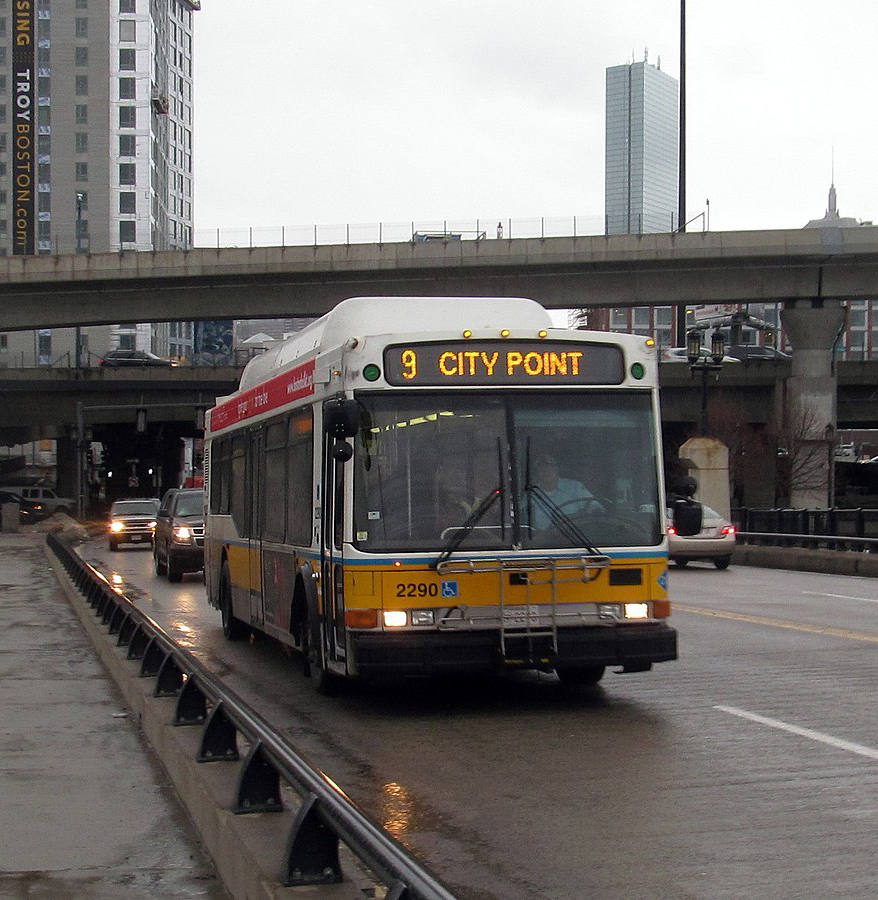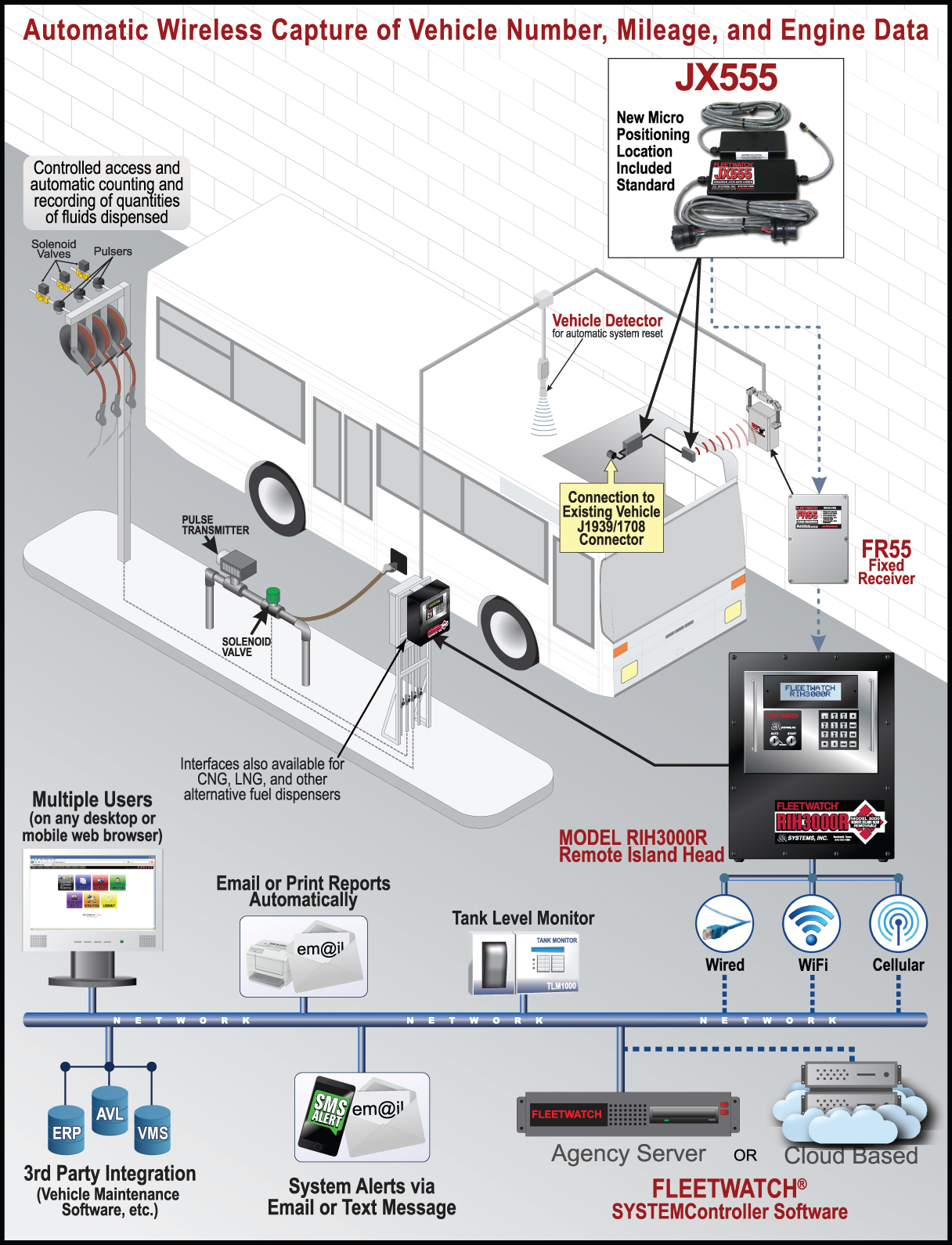Every day, tens of thousands of buses log tens of millions of passenger miles in transit systems across the U.S. With Fleetwatch, those buses — as well as paratransit and support vehicles — are carefully monitored with a sophisticated hardware/software system that tracks everything from fuel consumption to miles driven, maintenance alerts, vehicle locations, fare box data and more. Wireless Digi XBee® communication modules and gateways and Digi Remote Manager® play crucial roles in making it all happen.
The Complexity of Managing Public Transit
In Greater Boston, the Massachusetts Bay Transit Authority (MBTA), one of the world’s largest and longest-running transit agencies, operates a fleet of more than 1,000 buses that provide vital transportation to more than 400,000 passengers on 170 separate routes that reach 44 cities and towns1. That translates into a vast range of managerial and logistical challenges related to operating and maintaining those vehicles across 13 different depots housing anywhere from six to 200 vehicles each.
 Each day, MBTA’s operations team must refuel, clean, inspect, and periodically maintain those buses in an organized, methodical, and documented way to ensure asset longevity, cost-effectiveness, legal compliance, and driver/passenger safety.
Each day, MBTA’s operations team must refuel, clean, inspect, and periodically maintain those buses in an organized, methodical, and documented way to ensure asset longevity, cost-effectiveness, legal compliance, and driver/passenger safety.
So, how does the MBTA keep close tabs on some of its most valuable and mobile assets? It has adopted S&A Systems’ Fleetwatch, a powerful hardware/software solution providing reliable and accurate, real-time control and data acquisition for vehicles, employees, fuel/fluids, and tank monitor systems. The MBTA can then use this data to track operations and maintenance, generate dozens of standard reports, or automatically pass it along to a VMS system in real time or at specific times of the day.
Fleetwatch installations feature a data logger on each vehicle that captures sensor data from the bus (fuel consumption, fare collections, and more) as well as mileage. At the MBTA depot, that bus is immediately identified when it pulls in, and data is shared between the bus and a Remote Island Head that controls and monitors valves, pulsers, data receivers, and vehicle detectors to automatically count and compile servicing records. In addition to diesel and gasoline, the Remote Island Head can interface with CNG, LNG, and other alternative fuel dispensers.
Connectivity Keeps MBTA Public Transit Moving
According to John Elliott, vice president of technology for S&A Systems, these highly synchronized processes rely on timely data collection and sharing. “We’ve standardized on a range of connectivity solutions from Digi,” he said. “Each of our on-board data loggers uses a Digi XBee 3 Zigbee 3 RF embedded module that connects via 2.4 GHz to transmit and receive data. Inside the depot, that data passes to the Remote Island Head, which then relies on a separate Digi XBee cellular modem to send data through the cloud to our servers. That’s where we perform trend analysis and reporting. We make that available to the MBTA through a Web browser, or we can use a REST API or FTP to push that onto their mainframe.”
At 13 mm x 9 mm, Digi XBee modules offer size, weight, power, and performance advantages that are ideal for scalable device connectivity for compact and portable applications in a fully interoperable ecosystem. In the depots, Digi XBee 3 Cellular LTE Cat 1 modems act as reliable gateways for data backhaul. Tying it all together, Digi Remote Manager gives the MBTA a single dashboard to provision devices securely and maintain the communications infrastructure.
“We’re very pleased to deploy Digi components throughout our solution,” said Elliott. “We love that Digi products have a long shelf life and remain available for many years. The average lifespan of a bus is about 12 years, and we have some other customers who have been using the same equipment since 1983. It’s important for us to work with a vendor that’s devoted to maintaining a product for decades.
“Digi has also designed and built industrial-grade components that meet our temperature and environmental specs and use ruggedized housings, which is essential in transit, of course. And Digi pre-handles all of the regulatory certifications. When we get a Digi module, we know it works without any redesign on our part. And if any issue does arise, we can quickly resolve it without having to dispatch anyone on-site. That’s solved a lot of resource issues for us. Digi firmware has been reliable since day one. They’re like the Apple of the industrial world — you just plug it in, and it works.”
Orchestrating Fleet Management for Public Transit
According to Elliott, when the MBTA buses roll in (past a solar-powered gate-reader), Fleetwatch immediately identifies each vehicle via RFID as it arrives at the depot. The sensor data and mileage are immediately offloaded and logged to update maintenance records. Refueling commences, and other fluids are topped off as needed. And specialized instructions are posted on a video monitor, including instructions for oil changes, washings, checking tire pressures, or holding for additional maintenance.

“We can also view driver data — average and maximum speeds, route performance, and any safety alerts or fault codes that have been initiated,” he said. “Then, the team can park the bus in one of their lots — and find it quickly when needed to get routes started the following morning. Previously the MBTA had to send out someone at 2 a.m. each morning with a clipboard to find and sequence the vehicles, which was very inefficient. Now, with a 2.4 GHz connection, they can immediately pinpoint the location of every bus within a few inches.”
That process repeats for dozens or hundreds of vehicles each night, but also for the T’s paratransit and non-revenue support vehicles as well — more than 2,200 vehicles in total. “Overall, we’re deployed by more than 80 transit agencies across the country, covering more than 27,000 buses, vans, cars, rail cars, and people movers,” he said. “We manage more than 35,000 fueling transactions each night and have recorded more than 1 billion miles of travel. The reliability of Digi’s components means we’re able to keep our solution rolling over the long haul.”
Connect with Digi
Seeking next-generation solutions and support? Here are some next steps:
1 The MBTA's On-Street Workhorse